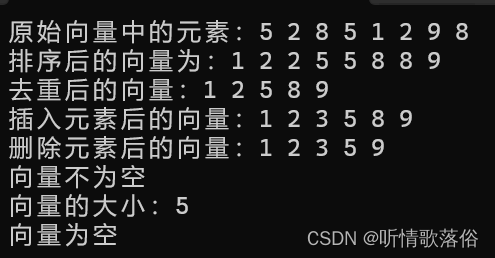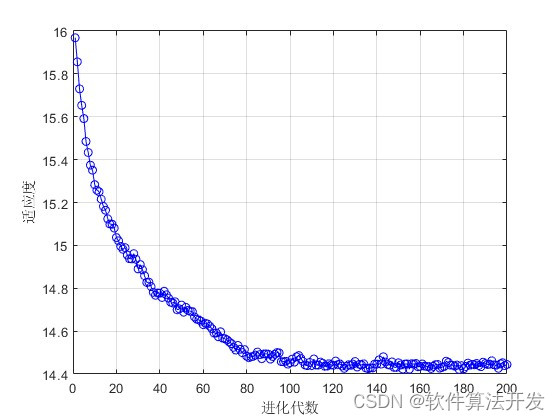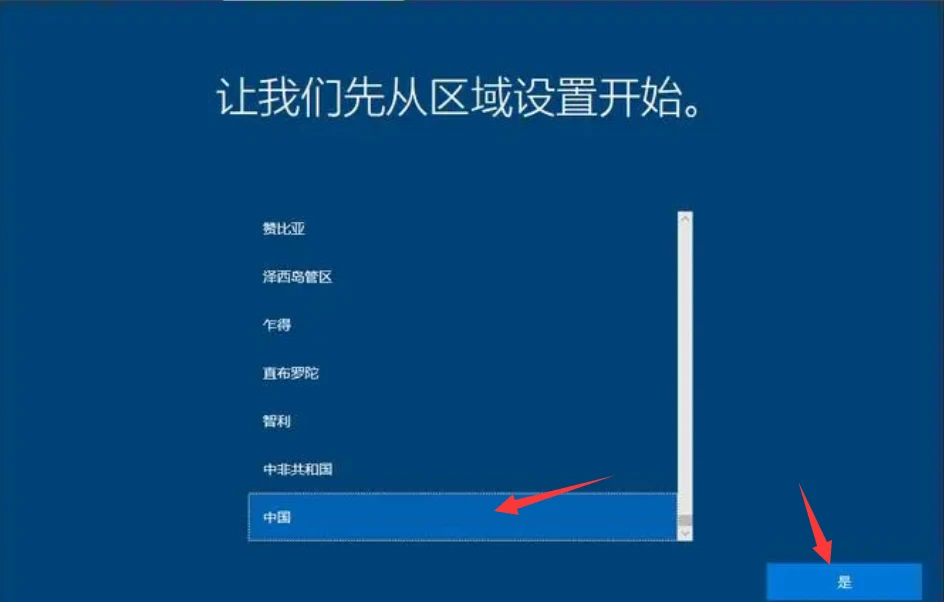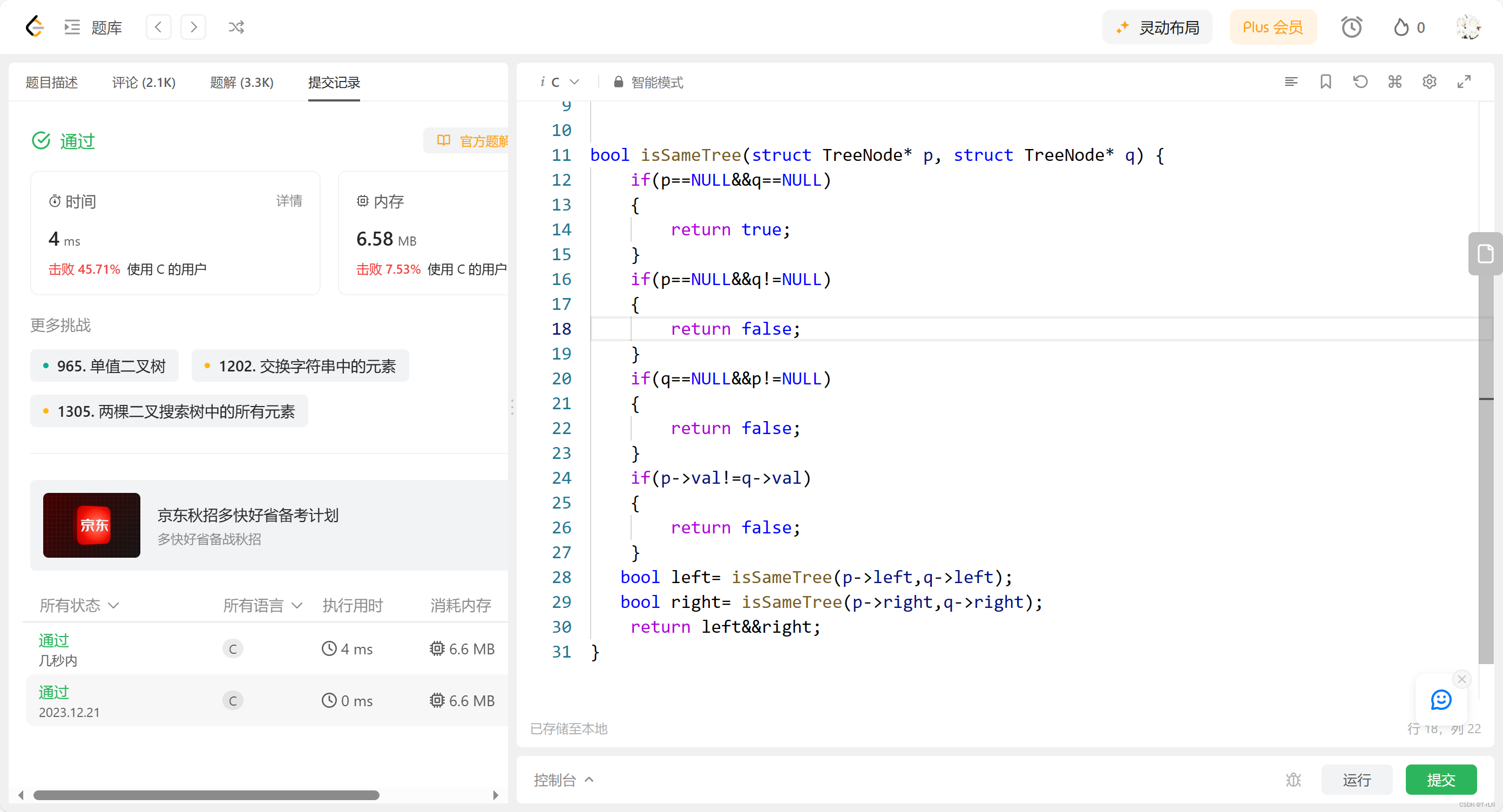本课目标
理解SQL注入的概念
掌握 PreparedStatement 接口的使用
熟练使用JDBC完成数据库的增、删、改、查操作
SQL注入
注入原理:利用现有应用程序,将(恶意的)SQL命令注入到后台数据库引擎执行能力,它可以通过在Web表单中输入(恶意)SQL语句得到一个存在安全漏洞的网站上的数据库,而不是按照设计者意图去执行SQL语句
防止SQL注入的方法:
- 过滤用户输入的数据库中是否包含非法字符
- 分步校验,先使用用户名来查询用户,如果找到了,在比较密码
- 使用 PreparedStatement 接口
PreparedStatement接口是 Statement 的子接口,可以使用该接口来替换 Statement 接口

PreparedStatement的使用
- 使用 Connection 对象的preparedStatement(String sql):即创建它时就让它与一条SQL语句绑定
- 编写SQL语句时,如果存在参数,使用“?” 作为数据占位符
- 调用PreparedStatement 的 setXXX()系列方法为占位符设置值,索引从1开始
- 调用 executeUpdate() 或 executeQuery() 方法,但要注意,调用没有参数的方法
PreparedStatement编程模板

使用JDBC完成数据添加的操作模板
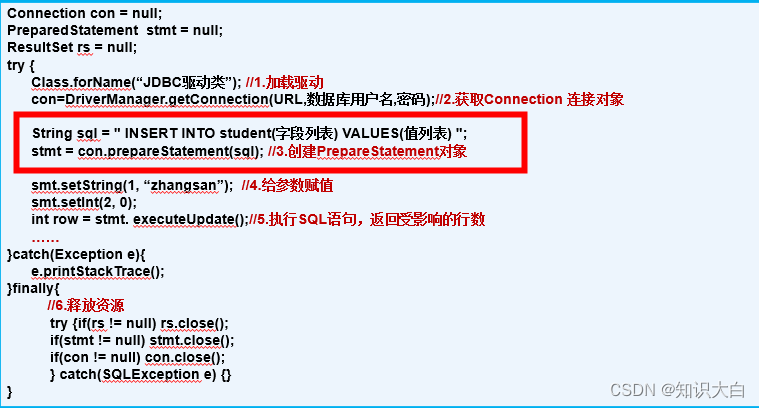
使用JDBC完成数据修改的操作模板
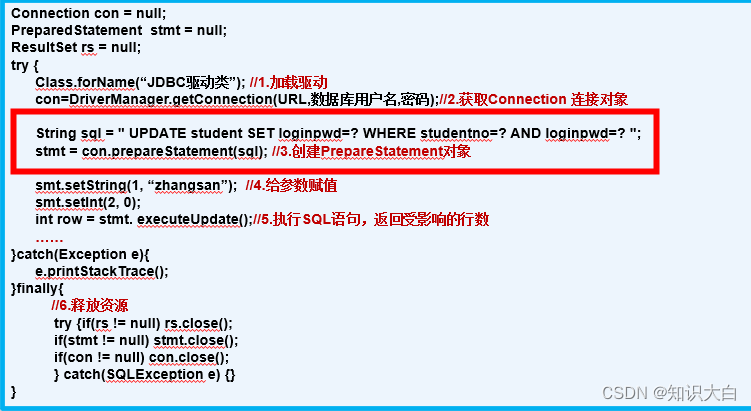
使用JDBC完成数据删除的操作模板
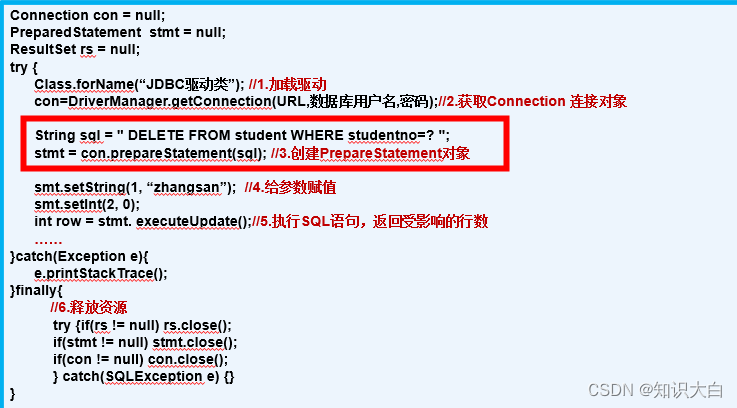
代码演示
-
User 类
public class User {
private int id;
private String userName;
private String userPass;
private int role;
public User(int id, String userName, String userPass, int role) {
this.id = id;
this.userName = userName;
this.userPass = userPass;
this.role = role;
}
public User() {
}
public int getId() {
return id;
}
public void setId(int id) {
this.id = id;
}
public String getUserName() {
return userName;
}
public void setUserName(String userName) {
this.userName = userName;
}
public String getUserPass() {
return userPass;
}
public void setUserPass(String userPass) {
this.userPass = userPass;
}
public int getRole() {
return role;
}
public void setRole(int role) {
this.role = role;
}
@Override
public String toString() {
return "User{" +
"id=" + id +
", userName='" + userName + '\'' +
", userPass='" + userPass + '\'' +
", role=" + role +
'}';
}
}-
方法类
public class UserDo {
Connection connection = null;
Statement statement = null;
PreparedStatement ps = null;
ResultSet resultSet = null;
/**
* 用户登录——查找
* 用户名
* 密码
*/
public User tologin(String userName, String userPass){
//1.获取连接对象
getConnection();
//2.编写SQL语句
String sql = "SELECT ID,USERNAME,ROLE FROM USER WHERE USERNAME = ? AND USERPASS = ?";
System.out.println("要执行的SQL语句:" + sql);
//3.创建statement对象
User user = null;
try {
//statement = connection.createStatement();
//创建PreparedStatement对象 发送SQL语句并执行
ps = connection.prepareStatement(sql);
//3.1处理参数
ps.setString(1,userName);
ps.setString(2,userPass);
//resultSet = statement.executeQuery(sql);
//4.执行并解析结果
resultSet = ps.executeQuery();
while (resultSet.next()) {
user = new User();
user.setId(resultSet.getInt(1));
user.setUserName(resultSet.getString(2));
user.setRole(resultSet.getInt(3));
}
} catch (SQLException e) {
e.printStackTrace();
}finally {
closeResource();
}
return user;
}
public User login(String userName,String userPass){
//1.获取连接对象
getConnection();
//2.编写SQL语句
String sql = "select ID,USERNAME,ROLE from user where userName = '"+userName+"' and userPass = '"+userPass+"'";
System.out.println("要执行的SQL语句是:" + sql);
//3.创建statement对象
User user = null;
try {
statement = connection.createStatement();
resultSet = statement.executeQuery(sql);
//4.解析结果
while (resultSet.next()){
user = new User();
user.setId(resultSet.getInt(1));
user.setUserName(resultSet.getString(2));
user.setRole(resultSet.getInt(3));
}
} catch (SQLException e) {
e.printStackTrace();
}finally {
closeResource();
}
return user;
}
public User login2(String userName,String userPass){
//1.获取连接对象
getConnection();
//2.编写SQL语句
String sql = "select ID,USERNAME,USERPASS,ROLE from user where userName = '"+userName+"'";
System.out.println("要执行的SQL语句是:" + sql);
//3.创建statement对象
User user = null;
try {
statement = connection.createStatement();
resultSet = statement.executeQuery(sql);
//4.解析结果
while (resultSet.next()){
user = new User();
user.setId(resultSet.getInt(1));
user.setUserName(resultSet.getString(2));
user.setUserPass(resultSet.getString(3));
user.setRole(resultSet.getInt(4));
}
if(userPass.equals(user.getUserPass())){
return user;
}
} catch (SQLException e) {
e.printStackTrace();
}finally {
closeResource();
}
return null;
}
/**
* 增加用户
*/
public int saveUser(User user){
int line = 0;
//获取连接对象
getConnection();
//sql语句
String sql = "INSERT INTO USER VALUES(DEFAULT,?,?,?)";
try {
ps = connection.prepareStatement(sql);
ps.setString(1, user.getUserName());
ps.setString(2, user.getUserPass());
ps.setInt(3,user.getRole());
//执行 增删改的执行方法是executeUpdate()
//返回受影响的行数
line = ps.executeUpdate();
} catch (SQLException e) {
e.printStackTrace();
}finally {
closeResource();
}
return line;
}
/**
* 修改用户
*/
public int updateUser(User user){
int line = 0;
getConnection();
String sql = "UPDATE USER SET USERNAME=?,USERPASS=?,ROLE=? WHERE ID=?";
try {
ps = connection.prepareStatement(sql);
ps.setString(1, user.getUserName());
ps.setString(2, user.getUserPass());
ps.setInt(3,user.getRole());
ps.setInt(4,user.getId());
line = ps.executeUpdate();
} catch (SQLException e) {
e.printStackTrace();
}finally {
closeResource();
}
return line;
}
/**
* 删除用户
*/
public int deleteUser(int id){
int line = 0;
getConnection();
String sql = "delete from user where id =?";
try {
ps = connection.prepareStatement(sql);
ps.setInt(1,id);
line = ps.executeUpdate();
} catch (SQLException e) {
e.printStackTrace();
}finally {
closeResource();
}
return line;
}
/**
* 获取连接对象
* @return
*/
public Connection getConnection(){
try {
//1.加载驱动
Class.forName("com.mysql.jdbc.Driver");
//2.建立连接
connection = DriverManager.getConnection("jdbc:mysql://localhost:3306/myschool?useSSL=false","root","123456");
} catch (ClassNotFoundException e) {
e.printStackTrace();
} catch (SQLException e) {
e.printStackTrace();
}
return connection;
}
/**
* 关闭资源
*/
public void closeResource(){
if(resultSet!=null){
try {
resultSet.close();
} catch (SQLException e) {
e.printStackTrace();
}
}
if(ps!=null){
try {
ps.close();
} catch (SQLException e) {
e.printStackTrace();
}
}
if(statement!=null){
try {
statement.close();
} catch (SQLException e) {
e.printStackTrace();
}
}
if(connection!=null){
try {
connection.close();
} catch (SQLException e) {
e.printStackTrace();
}
}
}
}
-
main 方法
查——登录
public class TestQuery {
public static void main(String[] args) {
Scanner sc = new Scanner(System.in);
UserDo userDo = new UserDo();
//验证登录
System.out.print("请输入用户名:");
String userName = sc.nextLine();
System.out.print("请输入密码:");
String userPass = sc.nextLine();
User user = userDo.tologin(userName,userPass);
if (user != null) {
System.out.println("登录成功!欢迎您【" + user.getUserName() + "】!");
}else {
System.out.println("登录失败!用户名或密码错误!");
}
}
}增加
public class TestInsert {
public static void main(String[] args) {
UserDo userDo = new UserDo();
User user = new User();
user.setUserName("yanlingji");
user.setUserPass("666666");
user.setRole(3);
int line = userDo.saveUser(user);
System.out.println(line > 0 ? "插入成功" : "插入失败");
}
}修改
public class TestUpdate {
public static void main(String[] args) {
UserDo userDo =new UserDo();
User user = new User(13,"yanlingji","888888",1);
int line = userDo.updateUser(user);
System.out.println(line > 0 ? "修改成功" : "修改失败");
}
}删除
public class TestDelete {
public static void main(String[] args) {
UserDo userDo = new UserDo();
int line = userDo.deleteUser(9);
System.out.println(line > 0 ? "删除成功" : "删除失败");
}
}![[C#]winform部署PaddleOCRV3推理模型](https://img-blog.csdnimg.cn/direct/ee920d6c2014440b856bf28084bb2d9a.jpeg)




